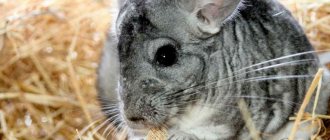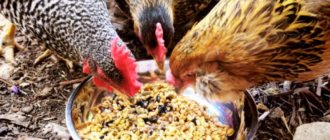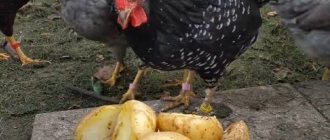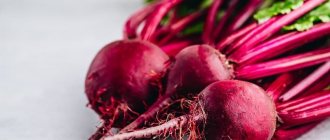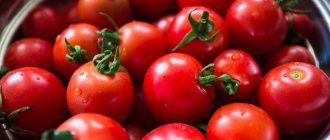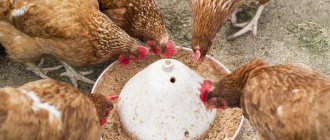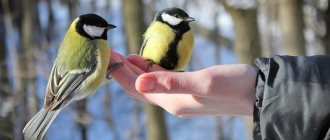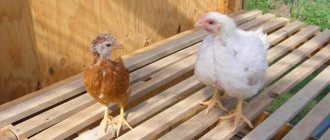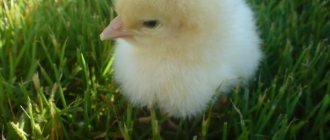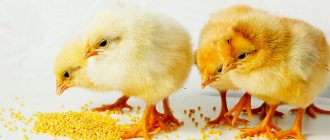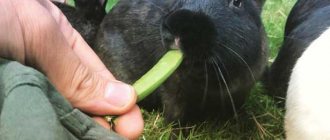The question of how to give nettles to chickens sooner or later arises before every farmer interested in developing his farm. To raise a strong, healthy population of chickens, it is necessary to constantly take care of the nutritional diversity of their diet. For good wearability and high quality meat, food in the form of grain and mixed feed is not enough: poultry must receive a wide range of vitamins and microelements all year round. And if in the summer chickens consume them daily with fresh grass, then in the cold season the owner will have to take care of feeding them with greens. Nettle is best suited for this purpose. It is not only healthy, but is also one of the most favorite delicacies in the poultry yard.
How is grass useful for birds? When can nettles be given to broilers and laying hens? How to properly prepare a plant for the winter? This is what our article is about.
What's the benefit?
The plant is useful for chickens at any age. It helps strengthen the immune system of young animals, increases egg production in laying hens, and increases meatiness in broilers. The herb is most beneficial (as a food additive) before flowering. At this stage of growth, the plant itself needs a lot of strength, so it produces large quantities of nutrients, vitamins, microelements and accumulates them as much as possible. The plant is rich in:
- proteins necessary for growth;
- carbohydrates that promote weight gain and produce the required amount of energy;
- fiber, which supports normal digestion;
- vitamins A, C, group B;
- iodine and iron, responsible for growth and immunity;
- calcium, potassium, phosphorus, magnesium and sodium, which laying hens need to form eggs.
Is it possible to give fresh nettles to chickens?
Definitely yes. Fresh grass is the healthiest; in dried grass, the amount of nutrients is halved. However, in winter, in conditions of complete absence of fresh grass, dried grass is an excellent vitamin supplement for complementary feeding.
We also recommend that you read the article “Green onions for adult broilers and chickens.”
It is worth paying attention not only to the nutritional, but also to the commercial benefits of the plant. The grass is distributed everywhere and in huge quantities. Its collection and preparation do not require any material costs, and the benefits from its use are enormous.
Mealworms
Perhaps this is the most favorite of all delicacies for chickens! Mealworms are highly nutritious and contain over 50% pure protein.
For him they are ready to fight tooth and nail. Chickens will drop everything they are doing and come running from any corner of the garden, just so as not to miss such a pleasure.
For one chicken, 5-10 worms (or 1-2 teaspoons by volume) will be enough. They should not be given more regularly as too much protein can be bad for their kidneys.
Purchasing mealworms specifically on a regular basis can be expensive. Next time we will try to tell you how you can make your own farm for breeding mealworms and please not only your laying hens, and maybe even sell extra batches.
How to feed to laying hens?
There is a difference between the summer method of feeding laying hens with nettle supplements and the winter method. In the warm season, chicken is fed exclusively with fresh shoots. If chickens have the opportunity to graze near thickets of grass, they themselves eat as much greenery as they need. If the bird does not roam freely, then fresh nettles should be brought into the aviary, given in unlimited quantities.
In the cold season, the main concern of the farmer is maintaining continuity of egg production. This can be achieved by giving nettles to laying hens according to a certain scheme:
- Provide the bird with three full meals a day, preferably at regular intervals. This is necessary so that the body continuously receives all the necessary substances, as well as the required amount of energy (in winter it is needed more than in summer).
- Make sure that the chickens always have warm water.
- For breakfast and lunch, give the bird mash with the addition of succulent food, and in the evening - dry food.
- The daily amount of nettle for chicken in winter is approximately 30 g.
- To increase durability, some farmers use the technique of alternating nettle with other herbs: dandelion, alfalfa, celandine.
- The most effective for feeding laying hens are mixtures of cottage cheese with dry nettle, as well as bone meal or finely chopped carrots.
Any chicken will eat such nettles.
Chicken feeding diet
Wet food option for chickens
Dry food includes compound feed. Compound feed for chickens is a feed mixture consisting of various types of nutrients necessary for the nutrition of birds. It is sold in crushed form. The crushed state makes it possible to get enough of only the required amount of product. One bird per day should eat 120 - 130 g of dry feed.
Dry food for chickens
Feed for chickens may include:
- Substances of animal origin;
- Plant products;
- Vitamins;
- Microelements.
In order for chickens to be healthy and have high productivity, it is necessary that their daily diet be balanced with nutrients and vitamins. The main components of the daily diet should be:
- Grain - up to 75% of the daily diet;
- Corn - up to 50% of the daily diet;
- Barley - up to 30% of the daily diet. It is not recommended to feed chickens barley in its pure form. This is due to the structure of the barley grain (sharp tips can harm birds);
- Wheat - 2/3 of the daily diet. Sprouted wheat grain is especially useful; it contains all the necessary vitamins for chickens;
- Oats - no more than 15% of the grain mixture. It allows you to avoid chickens pecking at each other.
- Additionally, you can add to the daily diet: rye, buckwheat porridge, cake, meal - no more than 10% of the daily diet;
With the help of sunflower seeds you can increase the egg production of birds. Legumes and flax have the same properties.
Feeding chickens with vitamin complexes and premixes is also very important.
Vitamin complexes include adding fish oil, yeast, fresh grass and silage to the feed.
With poor nutrition, cannibalism often occurs in chickens. Stronger individuals begin to peck at the sick and weak. Most often, this is typical for chickens. To avoid such situations, they can be given fish and meat waste. Before serving them to chickens and chickens, the bones must be melted and poured into a feeder.
In summer, vitamins can be obtained from grape leaves, sugar beet tops, etc. In winter, some poultry farmers produce fodder beet root crops. To prevent various diseases, it is useful to introduce onions and green onions into your diet. For the same purpose, the chicken coop should be treated with an iodine bomb.
How to give nettle to broiler chickens?
The plant is no less useful for broilers than for laying hens. The rich and balanced content of vitamins, proteins and carbohydrates allows chickens to quickly gain weight, gives them strong immunity, protecting them from diseases. The chickens are fed 6 times a day. The amount of nettle in the diet should be at least 20%. It is added to liquid mash.
It will also be useful for anyone involved in broiler breeding to know how to feed wheat and bread to their chickens.
Product benefits
- Firstly, it is worth noting that such food goes to poultry farmers absolutely free. Thanks to this, you can significantly reduce the costs associated with maintaining a feathered flock.
- Thanks to this vitamin supplement, chickens can show the highest levels of productivity. It is especially good to feed laying hens in winter so that they lay eggs more actively.
- Nettle helps chickens grow and develop faster, and also promotes the formation of the immune system.
- And the most important advantage is that it can be used all year round, both fresh, dried or concentrated. It perfectly retains all its properties, so it brings maximum benefits to birds.
Adding the product in question to the diet of the winged family has many advantages and not a single contraindication or disadvantage. Irreplaceable greens are available to every poultry farmer, and do not cost anything, and besides this, they can be prepared for future use. That's all that can be said about this wonderful herb!
Is it possible to give nettle decoction to broilers?
Such an infusion will not do any harm, but there will be little benefit either. Heat treatment of plant products significantly reduces the original amount of nutrients they contain. Therefore, giving the bird a decoction is not rational. It is better to feed it with dry leaves and stems. And the optimal option is to grind fresh shoots and add them to the mash. At the same time, not forgetting about the harmfulness of heat treatment, you should mix nettle with warm, but not hot main food.
At what age can nettles be given to broilers?
Nettle is one of the few herbs that can be given to chickens almost from birth. Experienced farmers begin feeding grass on the third day after the baby hatches.
We provide the birds with the necessary amount of water
The vital activity and vitality of the chickens’ body is simply impossible without a sufficient amount of water.
Water is another, almost the most important, component of the diet of any bird species.
Thus, the body of one individual consists of 70% water. If at least 25% of its interest is lost, then the bird may simply die. If within 2 days the hen does not have the opportunity to drink water, then she will immediately stop laying eggs, and if she continues in a pitiful state for another 5 or 8 days, she is guaranteed to die.
Therefore, birds need to be given water daily, just like the other foods listed above.
It is important that the water is not too warm, not too cold
Its optimal temperature is from +10 to +15ºС. How much water birds need will depend on the air temperature - the hotter it is, the more water they need. If at a temperature from +12 to +18 ºС one individual is able to drink approximately 250 milliliters, then when the thermometer increases above +35 ºС the same individual will need about 350 milliliters.
565
I've already helped
Chickens are not very demanding birds when it comes to feeding. Every owner is interested in ensuring that the birds grow healthy and resistant to diseases and climate changes and do not reduce egg production at any time of the year.
Therefore, in addition to grain crops and a variety of mixed feeds, chickens should have greens in their diet. In the summer, they themselves will find foods rich in proteins and vitamins in the ground. In the autumn-winter season, it is necessary to add green mass to the main diet.
The most suitable product, rich not only in vitamins, but also in proteins, carbohydrates and a whole range of macro- and microelements, so necessary for both adult laying hens and chickens, is common nettle, which grows everywhere. Therefore, in order to provide balanced nutrition to feathered pets, it is necessary to timely prepare nettles for the winter for chickens.
How to give nettles to chickens
How to prepare for the winter?
There are several ways to harvest grass for the winter:
- The easiest way is to collect 500 g bunches of fresh plants, tie them and hang them in a well-ventilated, dry place (preferably in a draft), protected from direct sunlight. Dry brooms are well stored (in boxes or “breathable” bags) and can be given directly to chickens in this form.
- Nettle for broilers and layers can also be prepared in the form of grass meal. Young shoots are collected, dried and ground into flour. This harvesting method is the most effective, since only 5% of nutrients are lost in the process, and the rest are preserved for a whole year. Flour is stored in a dry place. With high humidity, it deteriorates and loses its beneficial properties.
- Preparation of granulate. The grass is collected, dried and prepared into pellets using special equipment. They can be given to the bird along with non-hot broth. Store granules in a dry, dark place.
Using fruits to raise poultry
You can also include various fruits in the diet of domestic chickens, especially if the year has been fruitful and there are a huge amount of them in the garden.
So, birds can be given carrion of apples and pears, plums,
as well as cakes obtained from apples.
Also, ripe watermelons and tomatoes can be used as food. They must be given to birds in a crushed state, since they usually cannot completely peck off a whole apple. There should be no more than 15-20 grams of fruit per head of birds.
In general, fruits should be only a minor supplement for chickens, which, however, largely determines their health and ability to lay high-quality eggs. In particular, high-quality fertilizing makes the egg yolk more saturated in color.
It is also important in cases where birds are kept in closed and limited-space pens, unable to independently find green food
